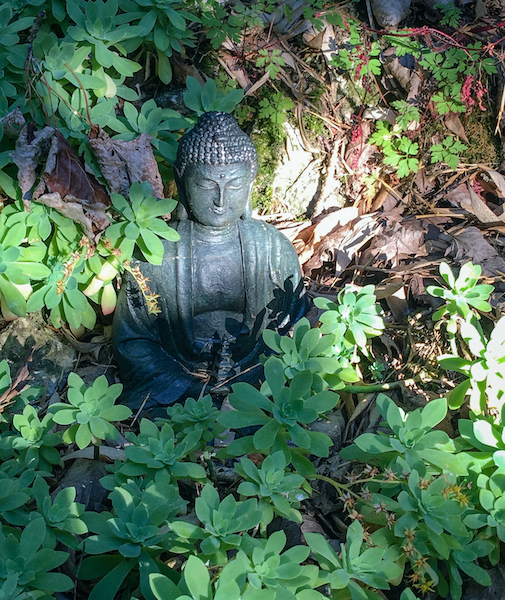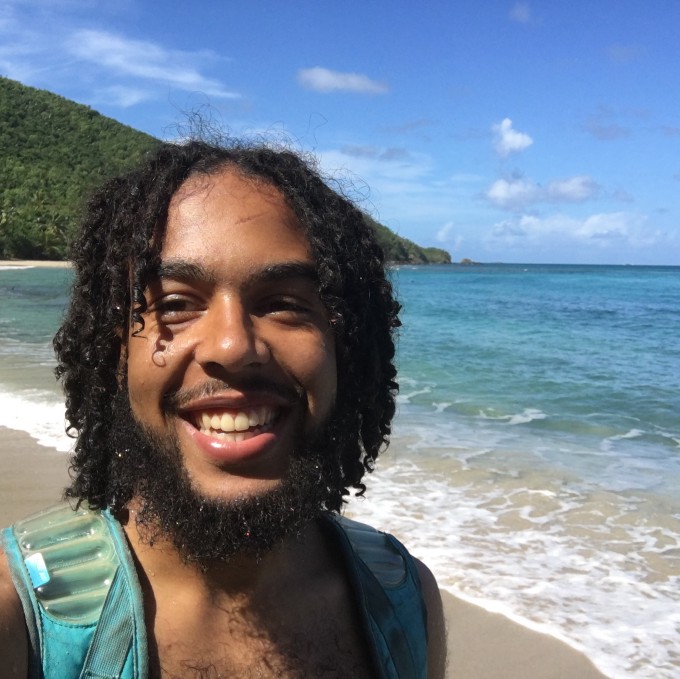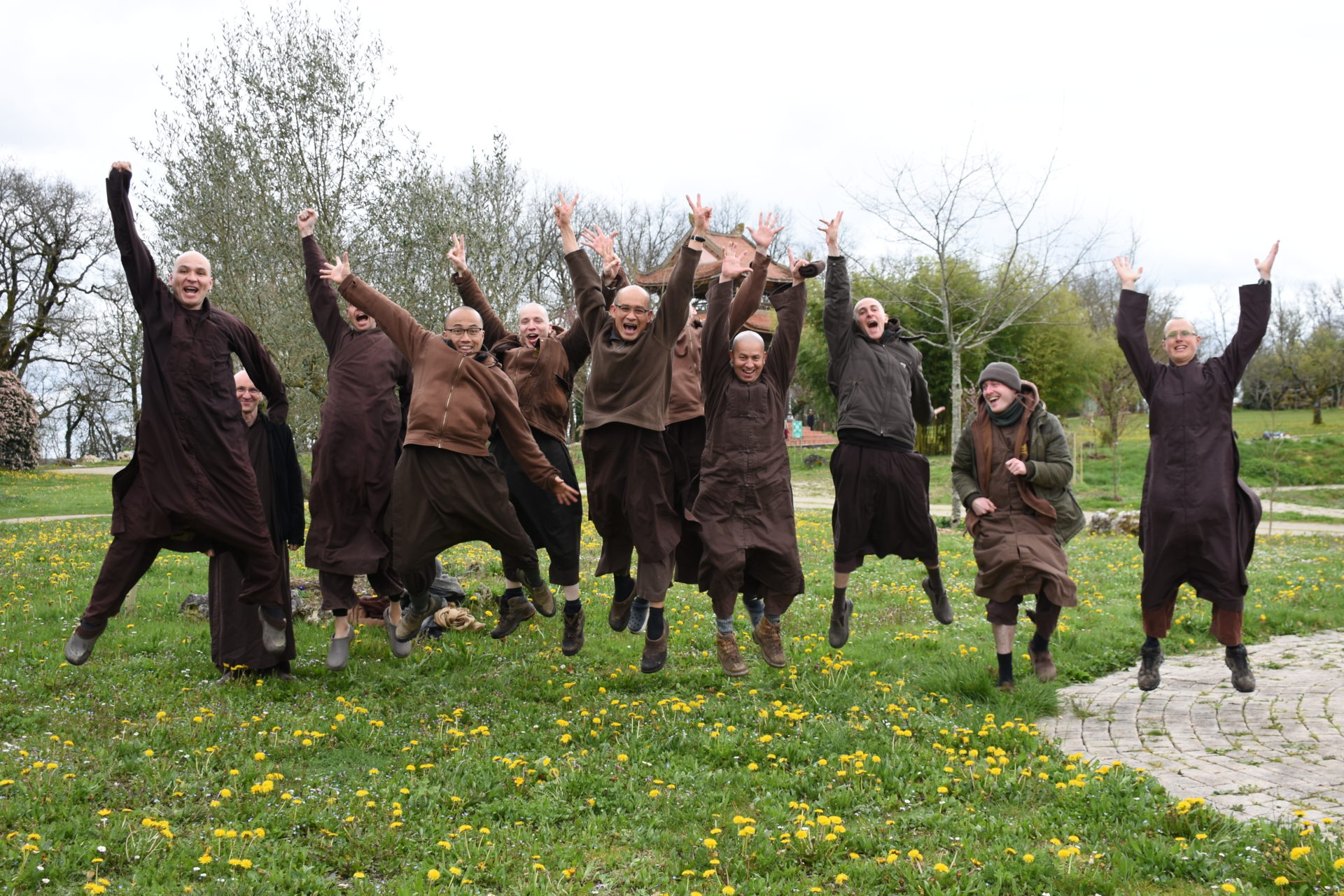By Jacob “Ajewole” Stanton

My meditative practice started while I was still in high school. Growing up in a Baha’i family, I was encouraged to meditate, but little explanation was given to me about how exactly to go about this. But, on the occasions that I remembered to say the obligatory ninety-five recitations of “Alláh-u-Abhá” (meaning “God is the Most Glorious”) that Baha’is are expected to repeat daily,
By Jacob “Ajewole” Stanton

My meditative practice started while I was still in high school. Growing up in a Baha’i family, I was encouraged to meditate, but little explanation was given to me about how exactly to go about this. But, on the occasions that I remembered to say the obligatory ninety-five recitations of “Alláh-u-Abhá” (meaning “God is the Most Glorious”) that Baha’is are expected to repeat daily, I would sometimes fall into a meditative state. Sitting on the edge of my bed with prayer beads in hand, awareness would slowly leave my feet, my legs, and then my hands. A comfortable feeling of peace and bliss would come over me as I felt that my consciousness was both inside and outside of my body. I liked this feeling but didn’t know what it was.
Despite my mother’s encouragement to continue with this practice, I didn’t embrace it until several years later when I went to college. In the whirlwind of freshman year, a new door of reality opened for me with my introduction to college partying and the altered states of consciousness that came with it. Exposed to this new way of being, I longed for ways to experience these states of altered consciousness without requiring a substance such as marijuana or alcohol. In this search, I stumbled upon mindfulness gurus on YouTube claiming that through specific meditative practices, breathing techniques, and sleep practices, altered states of consciousness would be easily accessible to sober minds.
I pursued this for about eight months. While only meditating sporadically, I would sit in the dark in complete silence, squeeze my eyes shut, and wait for whatever came up. Sometimes I saw incredible trippy visuals; other times my body felt rocked by the heartbeat of all that is, and other times I saw nothing. Propped up by some pillows in my dorm room, my body would be still, but my mind would jump between watching my breath, waking dreams of working on my coding assignments, and shouts of pain coming from my knee. Then, when I was about to give up on the practice and open my eyes, a tsunami of ecstasy would envelop my whole body, restoring in me my faith that this practice was worthwhile.
My practice changed significantly when I went home to Michigan for winter break during my sophomore year. My mom bought me a copy of Mindfulness in Plain English by Bhante Gunaratana, and soon after arriving I bought myself a copy of The Way of Zen by Alan Watts. Reading these books established for me a framework through which I could understand the practice of meditation. While I was still most excited about the possibility of experiencing altered spaces of consciousness, reading these books showed me that the traditional practitioners of meditation were in search of more than just a drugless trip.
During this time, I also connected with my neighbor, Carolyn, an experienced meditator and the founder of Greater Lansing Plum Village Sangha in Michigan. While her conversations left my brain feeling tied in some intangible knot of logic and nonduality, my experience with her helped me appreciate the depth and complexity of Buddhist philosophy.
From these experiences, the focus of my meditation slowly but surely changed. I became more consistent with my practice, de-emphasized the role of having cool experiences while I meditated, and instead worked to place my whole concentration on watching the rise and fall of my breath. During this time, meditation yielded huge dividends for me. I felt centered, gained control over my emotions, and had a clarity I’d never felt before. Meditation turned into this cocoon that I could retreat to for peace and serenity in the face of an uncertain world. Whenever I felt particularly panicked and anxious, I knew that a short, ten-minute meditation could calm me down. I felt like the model mindfulness practitioner.
However, that was just the positive side of my practice. What the “mindfulness mystics” on YouTube didn’t help me anticipate were the arguments I would get into with my girlfriend when spending time with her interfered with my meditation schedule, the times that I would be mid-meditation and yell at my family to “Stop talking so loud! I’m meditating!” or the times I would miss my meditation and feel out of whack all day. In these moments, instead of being the soft-spoken meditator I imagined myself to be, I turned into the junkie who had run through their stash.
My perspective on meditation changed significantly this fall. As an unemployed recent college graduate in the middle of a pandemic, I had a lot of time to spend with myself reflecting on the past few years and where I’m headed in my life. Along with this, I began a consistent yoga practice which, true to rumors, hit me with waves of deep emotions as I worked to open my extremely tight hips. In this grounded and embodied space, I was forced to grapple with these emotions and in doing so learned a lot about the challenges I was facing. Around this time, my mentor gifted me a copy of the book Radical Dharma: Talking Race, Love, and Liberation by Jasmine Syedullah, Lama Rod Owens, and angel Kyodo Williams. This book, which I would strongly recommend to any fellow meditators of color, explores the imprint of racial oppression and inequity upon American Buddhist practice and examines how the tenets of the Buddhist Dharma could be applied towards the fight against white supremacy. Viewing the Buddhist meditative practice through this lens of its practical use in fighting oppression made me critical of my own pleasure-seeking approach to meditation.
Ultimately, this shift in understanding showed me that the emotions and thoughts we have are there for a reason. Everything that comes up within us—be it sadness, anger, or joy—serves as a signpost for us to learn from and inform our actions. That feeling of anxiety we were considering meditation to resolve may have been trying to tell us that it’s time for a career change. That deep depressive rut we’ve been stuck in might not be a chemical imbalance and may instead be a sign that we have some unresolved trauma we still have to face. In my life, this became evident in June 2020 when my peers were taking to the streets demanding justice for George Floyd. While this was going on outside, I was at home meditating, convincing myself that everything was okay because in that meditative state, I could realize that race is only a form that holds no inherent truth. That may be true, but in these moments, I was also being complacent.
Now when I meditate, I try to not come with expectations of bliss or peace. I just come to sit with myself. Some days my consciousness feels “blurred” (it’s hard to describe), and I feel overwhelmed with bliss. But then other days, I just sit painstakingly trying to observe and not engage with all of the thoughts that come up in my mind. Some days I sit in silence, and other days I’ll be subjected to listening to my family talking about news in the other room for the duration of my meditation.
No matter what, I try to stay aware of my emotions: how they ebb and flow, when they arise, and what they’re trying to tell me. And while this isn’t as pleasurable of a practice as when I first started meditating, I’m usually able to walk away from each session with a few new ideas and a few new perspectives on my issues I could only glean by looking at things from a different direction. I may not feel like I’m walking on clouds when I get off my cushion, but I do know that what I’ve learned will help me become a more considerate, empathetic, and loving human.
EXCERPTS REPRINTED WITH PERMISSION FROM JACOB’S BLOG AT medium.com/@jake-ajewole-stanton.

Jacob “Ajewole” Stanton lives in Providence, Rhode Island, US. He’s interested in the connections between indigenous knowledge systems and science. He’s a 2020 Brown University graduate with a degree in Mathematical Physics and Africana Studies.

